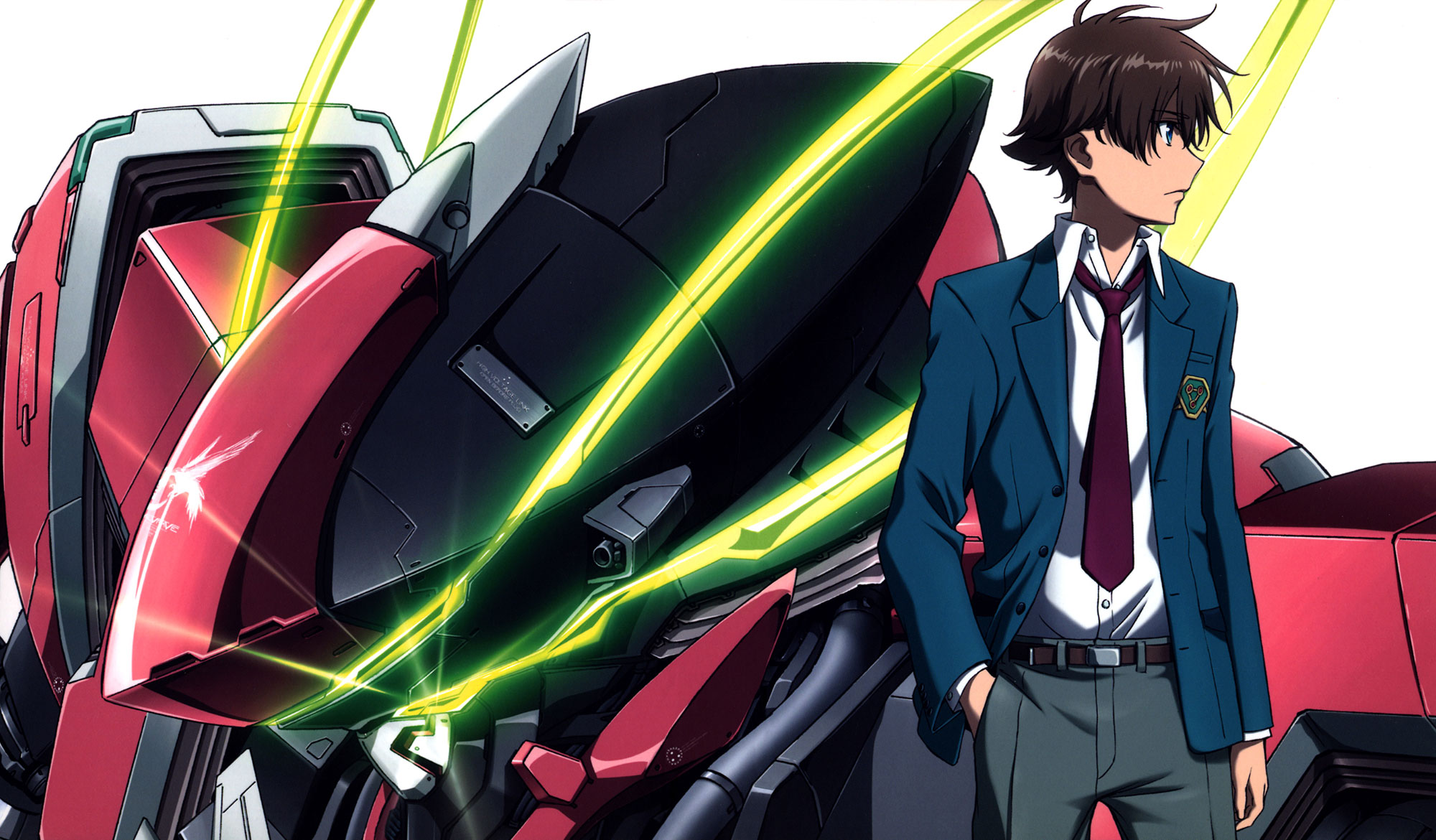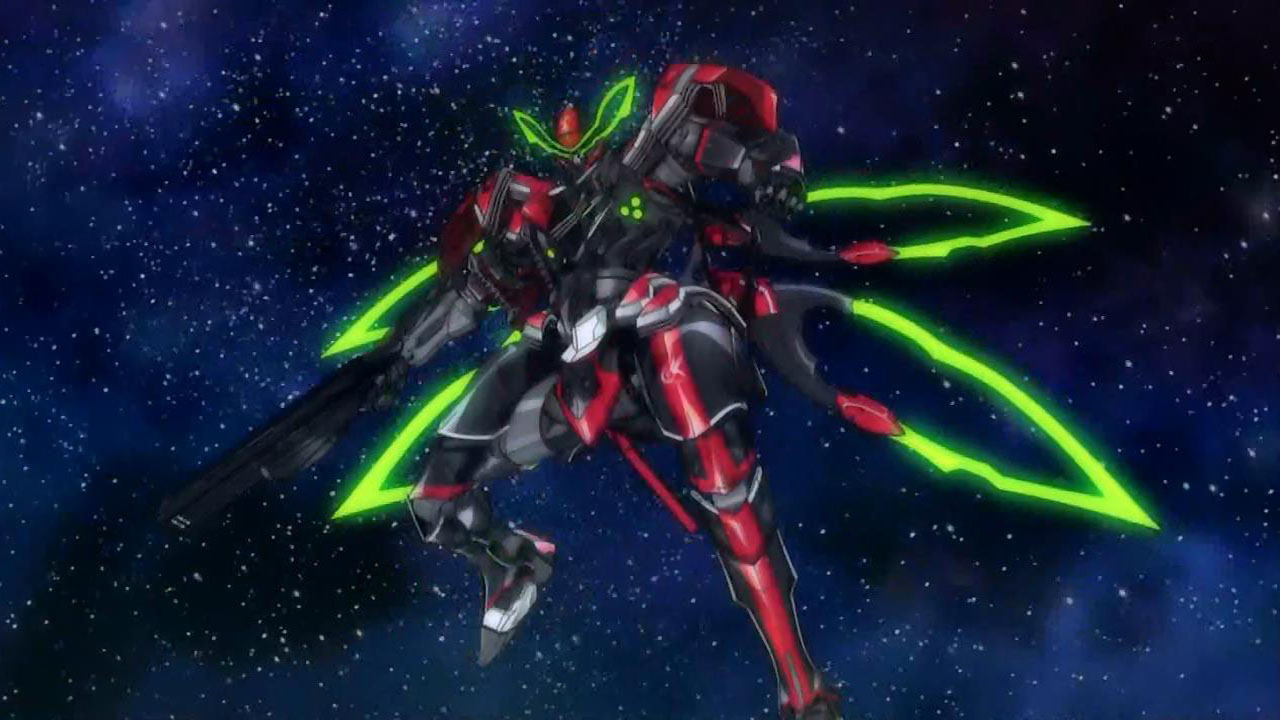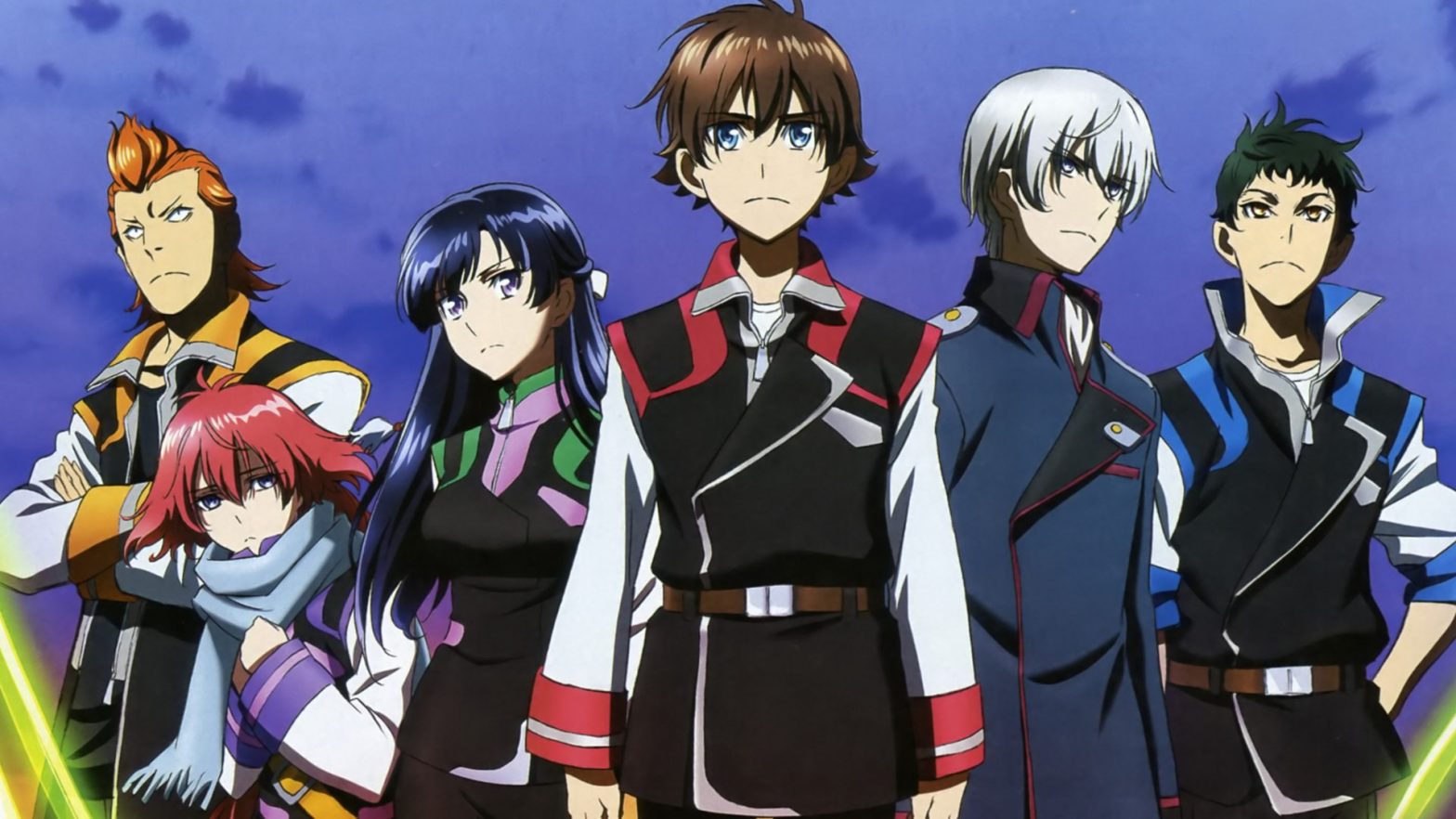Kakumeiki Valvrave, known also as Valvrave the Liberator, is a Spring 2013 anime that received a one course run of merely 12 episodes. The original series was produced by Sunrise, the studio behind Code Geass and the popular Gundam franchise.
Valvrave the Liberator follows the 17 year old Haruto Tokishima who lives in the JIOR colony in outer space. The story begins when they are attacked by a group that is in search of the mechas known as Valvraves that are supposedly housed in Sakimori, the school that Haruto attends. During the attack, Haruto comes across one of the Valvrave units hidden in Sakimori. After agreeing to let go of his humanity, Haruto is granted the ability to pilot the Valvrave and fight the invading forces.

Valvrave generally tries to accomplish many things but falls short in most aspects. The plot would have ideally been a good premise following the structure and themes of most of the mechas produced by Sunrise. There are however major elements that make the story feel messy rather than being cohesive. The most blaring of these elements is how Haruto is meant to give up his humanity, through vampirism. The problem with this is that it feels quite random. Rather than presenting a good reason for this transformation, the entire vampire element doesn’t really add much value to the plot making it almost irrelevant.
Valvrave the Liberator has nothing to do with Kite Liberator, which is a very different kind of show.
Coupled with this, the background and setting of the anime aren’t exactly built up well. One example is how they fail to present a reason for the current set up of humanity. For one thing, other than attributing the ability to live in space to an piece of advanced technology called the Dyson Sphere, there is no exploration into the reason for moving most of humanity into space while leaving a minority behind. Aside from this, we are presented with factions of humanity that see no development beyond their political stance. Dorssia for instance is shown to be militaristic focusing on their power and on conquering other groups. JOIR is neutral in nature. Despite their supposed political stances, there is hardly any political plays outside of Dorssia’s attempts to take the Valvraves. Rather than showing any semblance of a political approach to resolving conflict, the series relies heavily on creating moments that involve the usage of Valvraves in battle.
Worst of all is the bland cast of characters. Other than L-Elf who is built up as a man of many talents, Valvrave the Liberator offers no impactful character. Despite its rather large cast, none of the characters really leave a lasting impression. Even the series protagonist sees little development or growth. His role is primarily that of a Valvrave pilot, nothing more.

While it does not stand out in other aspects, Valvrave the Liberator does feature an amazing set of mechas. Being a product of the studio behind the well established and renowned Gundam franchise, its no surprise that one of the best aspects of the series is the designs of the mecha units. Rather than going with designs that reflect old school mecha, Valvrave the Liberator features designs that reflect the implications of advanced technology. The result is an aesthetic that gives the impression that these mechas are a product of the age of space travel as opposed to the more common mecha designs that we’ve seen in the past. Coupled with the look of each unit, the design of each mecha also makes it so that each is created with a specific function in mind.
Aside from the designs, one of the best elements of the show is its opening, Preserved Roses by T.M. Revolution and Nana Mizuki. By themselves, both T.M. Revolution and Nana Mizuki have garnered much fame for their performances. Following that, it isn’t surprising that the opening that their collaboration produced stands out and serves as a highlight of the series.
Overall, Valvrave the Liberator attempts to bring too many things to the table and fails to deliver in most departments. With its attempt to go in too many directions, the anime simply falls short, making it a disappointment especially coming from a mecha powerhouse such as Sunrise.
Who made Valvrave?
The show is presented by Aniplex, which is actually a division of Sony. It was created by studio Sunrise, and originally aired on Japanese networks MBS, TBS, CBC, BS-TBS, RKB, and HBC.
The manga was written by Karega Tsuchiya and published by Shueisha, one of the largest publishers in all of Japan.
